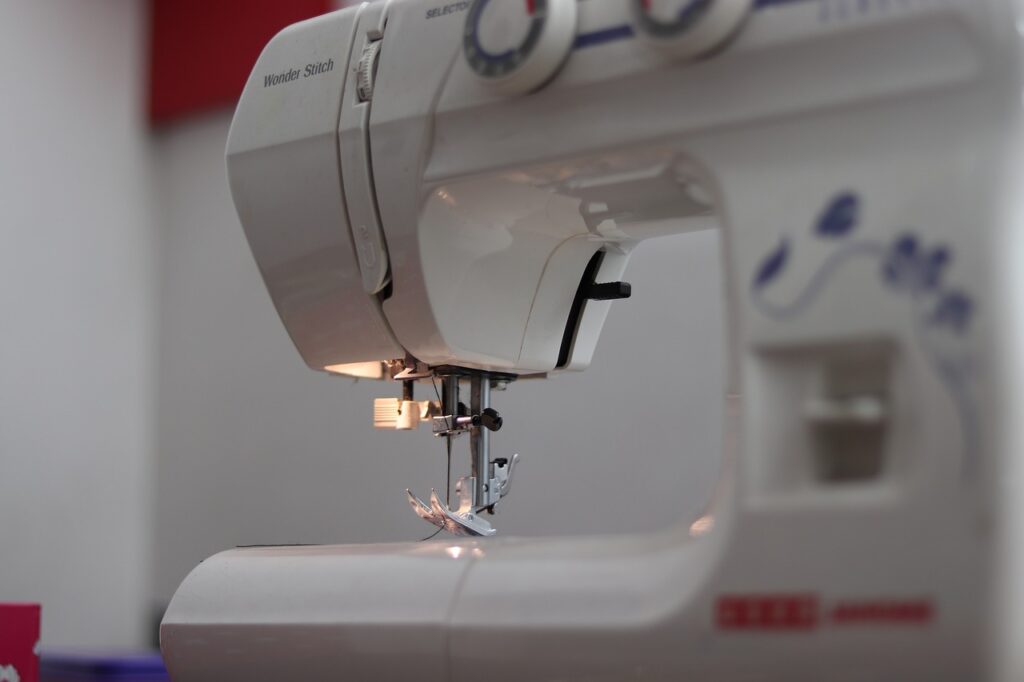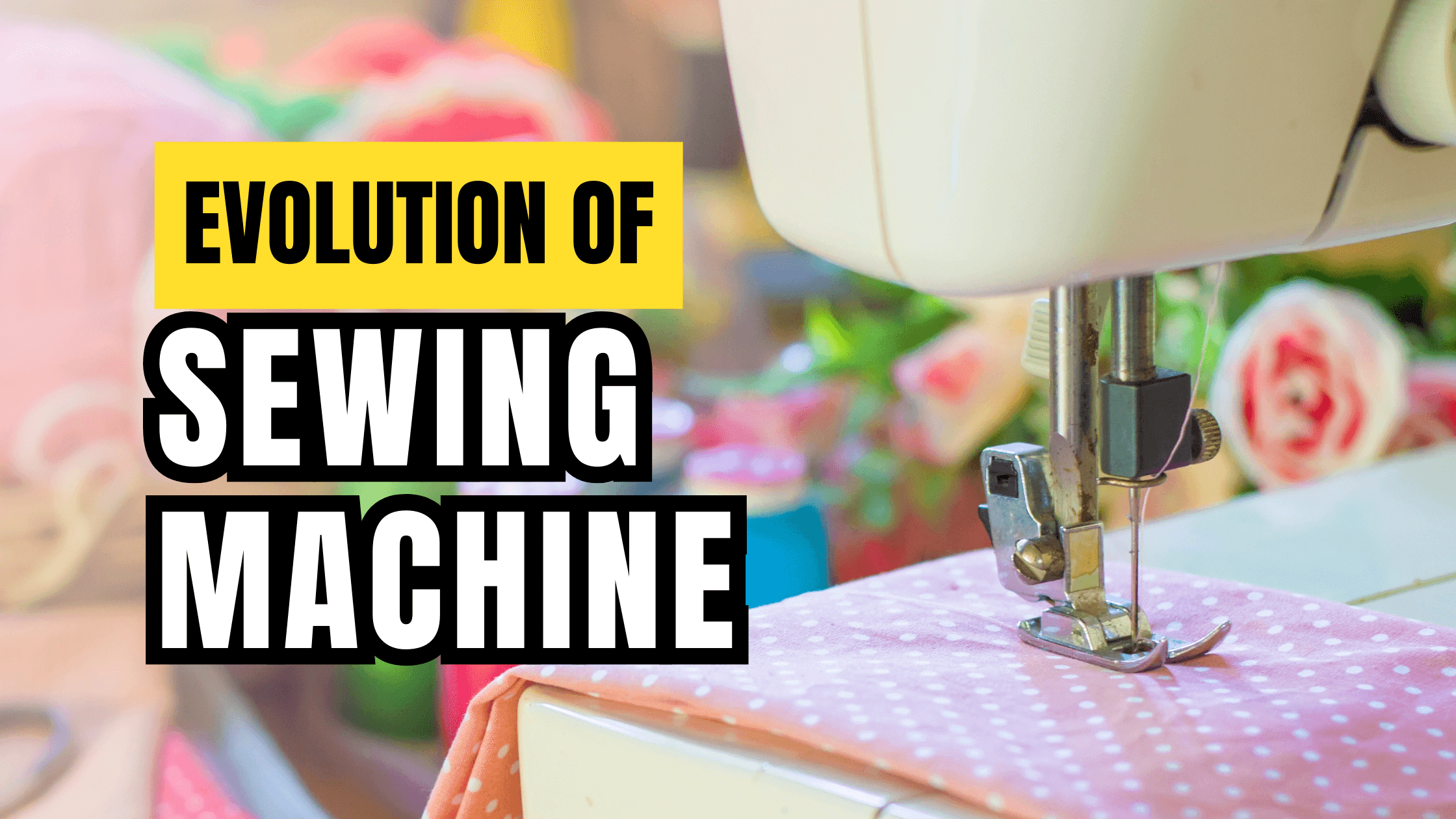Sewing Machine Evolution
The history of sewing machines is marked by significant advancements that have revolutionized the capabilities of these stitching apparatus. From the early mechanical models to the modern, technologically advanced devices, the evolution of sewing machines has introduced innovative features that have transformed the art of sewing. These advancements include computerized technology, 3D printing, and automatic needle threading, which have greatly enhanced the efficiency and precision of sewing equipment.
Throughout the years, sewing machines have evolved from simple manual devices to sophisticated computerized systems, integrating cutting-edge technology to streamline stitching processes. The incorporation of 3D printing has further revolutionized the production of sewing machine components, leading to enhanced durability and precision in their construction. Additionally, automatic needle threading features have simplified setup processes and made sewing more accessible to individuals with dexterity challenges.
The evolution of sewing machines continues to shape the future of sewing technology with these innovative features at its core. As we delve deeper into this topic, we will explore each advancement in detail and its impact on modern sewing equipment.
Computerized Technology
The integration of computerized technology has completely revolutionized the sewing machine industry, ushering in a new era of precision and efficiency. By incorporating advanced computerized systems, sewing machines have undergone a remarkable transformation, offering a wide array of benefits to both beginners and experienced sewers.
Integration of Computerized Systems
The integration of computerized systems has fundamentally altered the stitching processes, enabling precise and automated stitching that significantly enhances the overall quality of sewing projects. This advancement has streamlined the entire sewing process, allowing for intricate designs to be executed with unparalleled accuracy. The automated nature of computerized sewing machines minimizes the margin for error, resulting in flawless stitch work that meets the highest standards.
Benefits of Computerized Technology
Computerized technology brings forth a host of advantages that cater to the diverse needs of sewers. These digital sewing machines offer programmable stitch patterns, allowing users to create customized designs with ease. Additionally, automatic tension settings ensure optimal thread tension throughout the stitching process, eliminating the need for manual adjustments and ensuring consistent stitch quality.
Moreover, the user-friendly interface of computerized sewing machines makes them accessible to individuals at all skill levels. Whether it’s a novice sewer or an experienced enthusiast, these digital devices provide intuitive controls and clear displays that simplify the operation and customization of stitching patterns.
3D Printing Impact
Incorporation of 3D Printing
The incorporation of 3D printing has brought about a remarkable transformation in the production of sewing machine components. This additive manufacturing process has revolutionized the way sewing machine parts are fabricated, leading to enhanced durability and precision in their construction. By utilizing 3D fabrication techniques, manufacturers can create intricate and customizable sewing machine parts with unprecedented accuracy and detail.
Advantages of 3D Printing
The impact of 3D printing in the realm of sewing machines extends beyond traditional manufacturing methods. One significant advantage lies in the rapid prototyping capabilities offered by this innovative technology. Sewing machine components can be prototyped quickly and efficiently, allowing for swift iterations and modifications during the design phase.
Moreover, 3D printing technology enables the creation of complex designs with ease, offering a level of intricacy that was previously challenging to achieve through conventional manufacturing processes. This capability opens up new creative possibilities for designing sewing machine components with unique shapes and features.
In addition to its flexibility and precision, 3D printing offers cost-effective solutions for manufacturing sewing machine components. The efficiency of this additive manufacturing process contributes to reduced material waste while optimizing production timelines, making it an economically viable option for creating high-quality parts for modern sewing machines.
Automatic Threading Advantages
Sewing machines with automatic threading capabilities offer significant advantages that streamline the setup process and enhance the overall sewing experience. The efficiency and precision of automatic needle threading contribute to a more accessible and error-free sewing process, particularly for individuals with dexterity challenges.
Efficiency of Automatic Threading
The integration of automatic needle threading simplifies the initial setup process, saving valuable time and reducing eye strain for sewers. This innovative feature eliminates the need for manual insertion of the thread through the needle’s eye, allowing users to swiftly prepare their machines for stitching. The convenience of automatic threading not only enhances operational efficiency but also makes sewing more accessible to individuals who may experience difficulties with traditional threading methods. By automating this fundamental aspect of machine preparation, sewers can focus on their creative projects without being impeded by intricate setup procedures.
Precision and Reliability
Sewing machines equipped with automatic threading features ensure consistent and accurate needle insertion, minimizing errors in the stitching process. The self-threading mechanism guarantees precise alignment between the thread and the needle, eliminating the risk of misalignment or uneven tension that can compromise stitch quality. This level of precision is particularly beneficial when working on intricate designs or delicate fabrics, where accuracy is paramount. The reliability of automatic threading enhances the overall sewing experience by providing a seamless transition from machine setup to flawless stitch execution, empowering sewers to achieve professional-grade results with ease.
Embroidery and Quilting
Versatility for Embroidery
The integration of advanced sewing technology has propelled modern sewing machines to offer unparalleled versatility in embroidery capabilities. These stitching advancements have unlocked a world of creative possibilities, allowing sewers to craft intricate and customizable designs with exceptional precision and detail. From delicate floral motifs to elaborate monograms, the embroidery features of contemporary sewing machines cater to a wide range of artistic expressions, enabling personalized embellishments that elevate textile creations to new heights.
Enhanced Quilting Capabilities
Sewing machines equipped with cutting-edge quilting functions have redefined the landscape of textile technology, providing both precision and speed for quilting projects. The seamless integration of innovative stitching advancements ensures enhanced overall efficiency in quilting endeavors. Whether it’s intricate patterns or large-scale projects, the advanced quilting capabilities of modern machines meet the diverse needs of quilting enthusiasts. These technological marvels empower sewers to explore the art of quilting with unparalleled ease and finesse, bringing their creative visions to life with exceptional accuracy and craftsmanship.

Maintenance Tips
Routine Cleaning and Lubrication
Maintaining a sewing machine through routine cleaning and lubrication is crucial for ensuring its smooth and efficient operation. By adhering to proper maintenance practices, sewers can prevent the buildup of lint and debris, ultimately extending the longevity of their machines.
To initiate routine maintenance, start by unplugging the sewing machine and removing the needle plate, presser foot, and bobbin case. Using a small brush or vacuum with a soft brush attachment, carefully remove any accumulated lint, dust, or stray threads from these areas. Pay close attention to the feed dogs and tension discs as these are common areas where debris may accumulate.
Once the cleaning process is complete, it’s essential to lubricate the moving parts of the sewing machine. Apply a small amount of sewing machine oil to designated points such as the shuttle hook race, shuttle hook driver, needle bar frame bracket, and other specified areas as indicated in the machine’s manual. Proper lubrication ensures that the components move smoothly during operation while minimizing friction that could lead to wear and tear.
Regular maintenance not only keeps the sewing machine in optimal condition but also contributes to consistent stitch quality and overall performance. It is recommended to establish a schedule for routine cleaning and lubrication based on usage frequency to uphold the efficiency of the sewing machine over time.
Troubleshooting and Repairs
Understanding common sewing machine issues and troubleshooting techniques empowers sewers to address minor problems independently. Some prevalent issues include thread jamming in the bobbin area, skipped stitches, or uneven tension. When encountering such problems, first refer to the user manual for specific guidance on identifying and resolving these issues.
For more complex or persistent issues that require professional attention, timely repairs and servicing by experienced technicians are essential. Seeking assistance from certified technicians ensures that any underlying mechanical or electronic complications are accurately diagnosed and resolved. Professional maintenance not only restores optimal performance but also safeguards against potential damage that could arise from unresolved issues.
By staying proactive in addressing maintenance needs and promptly addressing repair requirements when necessary, sewers can sustain their innovative sewing features while enjoying uninterrupted creativity with their cutting-edge sewing functionalities.
Future Innovations
As we look ahead to the future of sewing machines, there is a promising landscape of technological advancements and sustainability initiatives that are set to shape the next generation of sewing technology. These upcoming developments hold the potential to elevate user experience, functionality, and environmental consciousness within the sewing industry.
Technological Advancements
The future of sewing machines is poised for further integration of smart technology, paving the way for enhanced user experiences and expanded functionality. With ongoing advancements in digital innovation, upcoming sewing machine models are anticipated to offer intuitive interfaces, seamless connectivity with other devices, and enhanced automation features. These technological strides aim to streamline the sewing process while providing users with greater creative control and precision in their projects.
One particularly exciting prospect is the potential development of sewing machines with artificial intelligence (AI) capabilities. By harnessing AI technology, future sewing machines could offer intelligent pattern recognition, predictive stitching suggestions based on fabric types, and adaptive adjustments for optimal tension and stitch length. This revolutionary integration of AI has the potential to transform the art of sewing by simplifying complex tasks and empowering users with advanced assistance in their creative endeavors.
Sustainability and Eco-Friendly Practices
In addition to technological advancements, future innovations in sewing machines are expected to prioritize eco-friendly materials and energy-efficient design principles. The growing emphasis on sustainability aligns with broader environmental initiatives and reflects an industry-wide commitment to reducing ecological footprints.
Upcoming developments may encompass sustainable manufacturing processes that minimize waste generation and resource consumption during production. From utilizing recycled materials in construction to implementing energy-efficient components, these eco-conscious practices aim to mitigate the environmental impact associated with traditional manufacturing methods.
Moreover, a focus on eco-friendly design extends beyond production processes to encompass the operational lifespan of sewing machines. Future models may incorporate power-saving features such as energy-efficient motors, standby modes for reduced power consumption, and optimized resource utilization throughout their lifecycle.
By embracing sustainable practices throughout design, manufacturing, and operation, forthcoming innovations in sewing machines seek to contribute positively to environmental conservation efforts while meeting the evolving needs of conscientious consumers.
Evolution of Sewing Machines
The evolution of sewing machines represents a remarkable journey marked by continuous innovation and technological advancements. These developments have not only transformed the capabilities of modern sewing devices but have also set the stage for the future of sewing technology.
From the early mechanical stitching apparatus to the cutting-edge computerized sewing equipment of today, the evolution of sewing machines has been driven by a quest for precision, efficiency, and accessibility. The integration of computerized technology, 3D printing, and automatic needle threading has reshaped the landscape of sewing, offering sewers unprecedented tools to bring their creative visions to life.
As we look ahead, the trajectory of sewing machine evolution holds promise for embracing sustainable practices and further integrating smart technology into these essential devices. The forthcoming innovations in this space are poised to elevate user experiences, expand functionality, and prioritize eco-friendly design principles. By embracing these advancements, the future of sewing machines is set to not only meet but exceed the evolving needs and expectations of sewers across the globe.
The ongoing evolution of sewing machines stands as a testament to human ingenuity and our unwavering commitment to enhancing everyday tools. As we continue this journey, we anticipate an era where sustainability meets seamless functionality in the realm of sewing technology.
